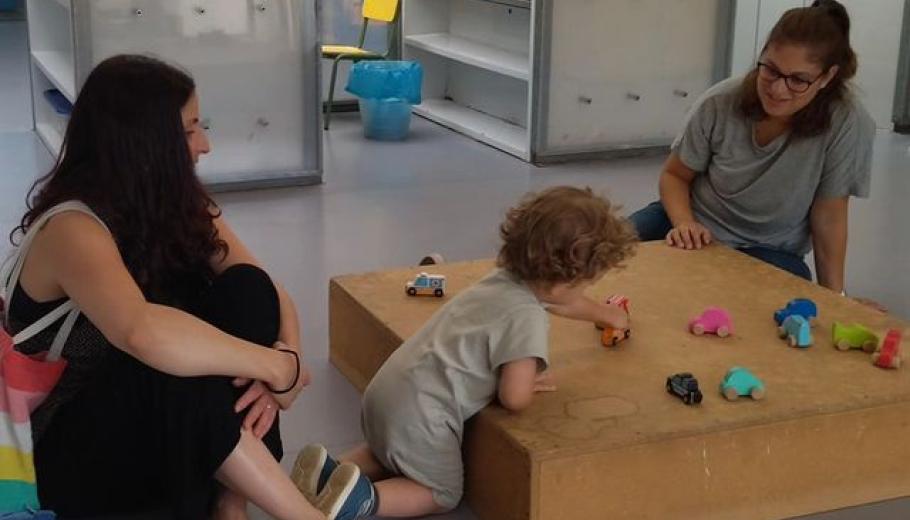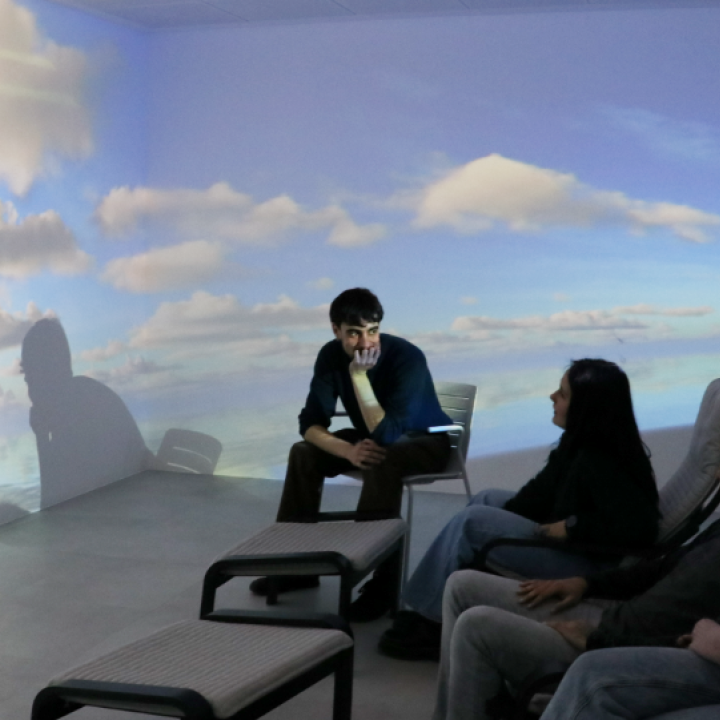Respecting their time and their needs is important for a good adaptation.
Understanding the process of how children respond to new environments and new referent people will help us accompany our daughters and sons respectfully and find strategies so that they feel safe and supported with the changes.
Mireia Grau Sánchez, preschool teacher and director of El Coral de Castellar del Vallès municipal preschool, explains and shares some tips to put into practice during the first days.
Familiarization at school is the initial process of bonding families and children with new people and the new space that welcomes them. It is the starting point for the creation of positive emotional bonds that will ensure that the child and his family feel safe and comfortable in the new school environment. Adaptation time involves establishing new relationships with adults and children, discovering and getting used to a different space, and changing schedules, habits and routines.
It is an individual process that depends on the child's own pace. So the support provided by the school and the family must respect their needs and times. At the same time, it also involves the adaptation of the family, which must get used to the change and delegate the care of the little ones in the house.
How long can the adaptation take?
Familiarization can last a few days or last for the first few weeks at school. There are children who feel good after a week and others who need more than a month to complete the process. The difference depends on several factors, such as their biological and maturing age, the emotional state of the accompanying adult and the way in which this separation is done.
Manifestations and behaviors of children in the first days
When a child arrives at school, at first he is insecure, since he is in a new environment and accompanied by unknown people, who little by little he will have to discover and establish an emotional bond.
This initial insecurity generates changes in their behavior, which we will have to take into account and observe on a day-to-day basis, in order to provide support adapted to their needs
- Anguish and moments of distress: Especially before the appearance of speech, the child shows his emotions by crying, but he could also find himself unappetizing.
- Relationships with new referents: The child can cling to the adult in the classroom, or reject their contact, or they can cling to their belongings.
- Releasing emotions at home: it could happen that children do not show angry attitudes at school and seem apparently calm, but release their emotions at home. They may find themselves more irritable, increasing their tantrums and demanding more attention from the family in their usual environment.
- Already established feeding and rest schedules and rhythms can be affected: It is very common to see changes in their routines because they are acquiring new ones at school, and this involves many emotions. They can even appreciate certain regressions in acquired learning.
What do we do at school to support the familiarization process?
- We facilitate a first individualized contact: We offer families a space for interviews with the educator of reference, to be able to establish this initial contact and discover the space of the classroom in a more careful and relaxed way. This interview allows us to transfer information about the child and his needs.
- We understand that families and the school are a team: Understanding and adapting to the new routines and habits involved in entering school can make the process easier. At the same time, sharing with educators the children's doubts and behaviors at home improves the support that school administrators can give to the child.
- Fluid and daily communication with families: The school reserves a daily space of time to be able to exchange with the families all relevant information about the child, to express doubts and concerns.
- We respect the physical and emotional rhythm of the children and their families: Taking into account individual needs and rhythms means that this familiarization can be carried out gradually.
- We defend that the farewell is calm, safe, and respectful for the children: As far as possible, we will make the entrances and exits more flexible to adapt to the needs of each one. But trying to establish the usual school hours as not to cause distress to the other children in the group.
- Furthermore, we prioritize accompaniment: Verbalizing at all times what is happening in the classroom, while also showing physical contact, with caresses, hugs…, as long as the child allows us to do so.
- Emotional responsibility: It's important to validate their emotions, verbalizing emotional states to help them understand and accept them, letting them know we understand and support them.
- Object of attachment: Allow the child to carry some personal object that provides security: pacifier, doll, cloth…
And at home, how can we support them?
- Anticipation: Explain to your child what nursery school is, what he will do and who he will meet there. It is necessary to explain the routine that will live, who will accompany him/her, who will pick him/her up at the exit…
- Farewell: Say goodbye when you leave, don't leave when he's distracted playing or cheat on him. The child must be aware that he will stay at school and will be reunited with his family at the end of his stay at the school.
- Trust and peace of mind: It is crucial that the child perceives that the family trusts the educator and the school. The child captures the emotion of the family and becomes imbued with it.
- Validation of emotions: Verbalize what your child is experiencing and feeling. Putting words to your feelings will help you feel understood and, consequently, more confident. Likewise, it is important to take into account the emotions of adults, you too will feel all kinds of feelings, express them and share the experience with educators and families.
Mireia Grau Sánchez, preschool teacher and director of the El Coral municipal nursery school in Castellar del Vallès.





